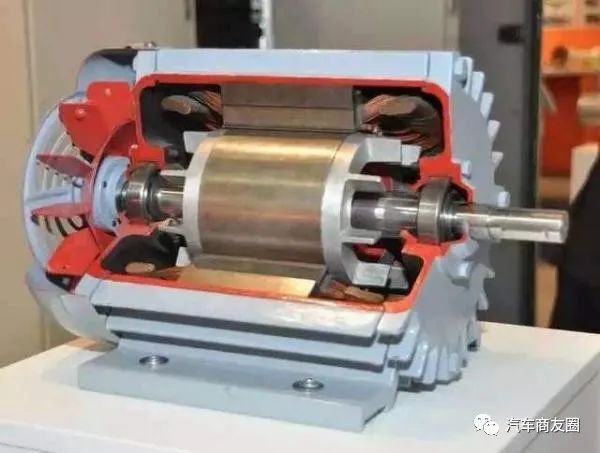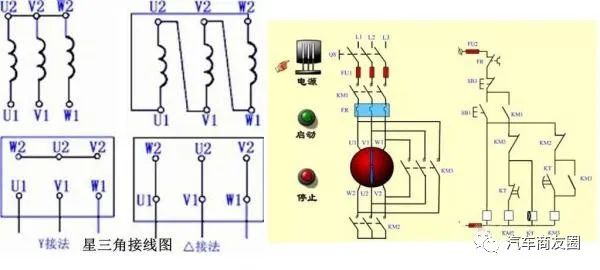The essence of electric vehicle electric control is motor control. In this paper, the principle of star-delta starting commonly used in industry is used to optimize electric vehicle control, so that 48V electric drive system can become the main form of 10-72KW motor drive power. The performance of the whole vehicle is guaranteed, and at the same time, the electric drive cost of small cars and mini cars is greatly reduced,
In the recent study, I realized that the control of electric vehicles is actually the control of the motor. Because the knowledge involved in this article is very extensive and detailed, if the principle and the process of optimizing the motor control scheme are fully described in detail, according to the textbooks currently read by the author, the knowledge points are enough to produce a monograph with more than 100 pages and more than 100,000 words . In order to allow readers on the self-media to understand and master such an optimization method within the range of thousands of words. This article will use specific examples to describe the process of optimizing the electric vehicle motor scheme.
The examples described here are based on Baojun E100, BAIC EC3, and BYD E2. Only the following parameters of the two models need to be related, and only the motor control is optimized to optimize it into a 48V/144V DC dual-voltage battery system, an AC 33V/99V dual-voltage motor and a set of motor drivers. Among them, the power electronic system of the motor driver is the key to the whole optimization scheme, and the author is studying it carefully and deeply.
In other words, the motors of Baojun E100, BAIC EC3, and BYD E2 only need to be optimized to a 29-70KW motor control system. These are representatives of the A00 mini-car, the A0 small car, and the A compact pure electric car. This article will use the industrial three-phase asynchronous motor control method to apply it to the control of electric vehicle motors through star-delta, V/F+DTC three-phase asynchronous induction motor control.
Due to space limitations, this article will not explain the principles of star triangle and so on. Let’s start with the common motor power in industrial motor control. The commonly used 380V three-phase asynchronous motor is 0.18~315KW, the small power is Y connection, the medium power is △ connection, and the high power is 380/660V motor. Generally, 660V motors are the main motors above 300KW. It is not that motors above 300KW cannot use 380V, but that their economy is not good. It is the current that limits the economy of the motor and the control circuit. Usually 1 square millimeter can pass 6A current. Once the three-phase asynchronous induction motor is designed, its motor winding cable is determined. That is, the current passing through is determined. From the perspective of industrial motors, 500A is the largest value for its economy.
Back to the electric vehicle motor, the PWM three-phase voltage of the 48V battery system is 33V. If the economical current of an industrial motor is 500A, the maximum economical value of a 48V electric vehicle is about 27KW for a three-phase induction motor. At the same time, considering the dynamic characteristics of the vehicle, the time to reach the maximum current is very short, usually not more than a few minutes, that is to say, 27KW can be made into an overload condition. Usually the overload condition is 2 to 3 times of the normal condition. That is, the normal working condition is 9 ~ 13.5KW.
If we only look at the voltage level and current capacity matching. The 48V system can only be within 30KW as the driving efficiency is the best working condition.
However, there are many control methods for three-phase asynchronous motors. Electric vehicles have a wide range of speed regulation (almost 0-100%) and torque control range (almost 0-100%). Under harsh operating conditions, electric vehicles currently mainly use VF or DTC control. If star-delta control is introduced, it may cause an unexpected effect.
In industrial control, the star-delta control voltage is 1.732 times, which is a coincidence rather than a principle. The 48V system does not step up the PWM frequency modulation to make AC 33V, and the motor designed according to the industrial motor voltage level is 57V. But we adjust the star-delta control voltage level to 3 times, which is the root of 9. Then it would be 99V.
That is to say, if the motor is designed as a 99V AC three-phase asynchronous motor with a delta connection and a 33V Y connection, the motor speed can be adjusted from 0 to 100% within the power range of 20 to 72KW under economical conditions. Usually the maximum speed of the motor is 12000RPM), the torque regulation is 0-100%, and the frequency modulation is 0-400Hz.
If such an optimization scheme can be realized, then A-class cars and miniature cars can obtain good performance through one motor. We know that the cost of a 48V motor system (within the peak value of 30KW) is about 5,000 yuan. The cost of the optimization scheme in this paper is unknown, but it does not add materials, but only changes the control method and introduces dual voltage levels. Its cost increase is also controllable.
Of course, there will be many new problems in such a control scheme. The biggest problems are the design of the motor, the design of the driver, and the very high requirements for the charging and discharging characteristics of the high-voltage battery pack. These problems are controllable and there are existing solutions. For example, motor design can be solved by adjusting the ratio of high and low voltage voltage levels. We will discuss it together in the next article.
Post time: Mar-02-2023


